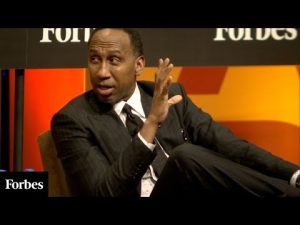Tensions are heating up in the Caribbean as the U.S. military readies itself for potential action against Venezuela. The Pentagon has been quietly escalating its presence in the region, and it looks like they are not just making a big fuss for show. This isn’t just another routine military exercise; it is a clear message to the Venezuelan regime that the United States is serious about addressing the situation. The U.S. military’s moves could change the game for Venezuela, and it seems the Trump administration is gearing up for a decisive response.
In late August, the U.S. kicked off its buildup by sending three warships into the Caribbean. This was just the beginning, as a Marine Expeditionary Unit, or MEU, which consists of around 2,200 Marines and sailors, was soon deployed to the region. This unit is unique, possessing robust air and ground attack capabilities and is trained to mobilize quickly for various missions. The addition of C17 cargo planes and F-35 fighter jets at the previously closed naval station Roosevelt Roads in Puerto Rico further indicates that the U.S. is not just playing around. The assets being moved—like P8 Poseidon spy planes and MQ9 Reaper drones—suggest a serious commitment to monitoring and potentially intervening in Venezuela.
What’s the message the U.S. is sending? It seems to be a clear signal that they are prepared to act should the need arise. The Trump administration is focused on ensuring they have a robust military presence in the Western Hemisphere. With multiple bases in the region and friendly relations with several Caribbean nations, including Trinidad and Tobago, the U.S. is positioning itself effectively should tensions escalate further. The closer U.S. forces are to Venezuela, the easier it becomes to operate and respond to any threats that might surface.
Meanwhile, Venezuelan President Nicolás Maduro is not taking these threats lying down. He has been upping his military drills and rallying his citizens to defend their country, perceiving the U.S. buildup as an existential threat to his regime. Attempting to bolster his position, Maduro has sought support from his allies, including Russia, China, and Iran. However, it appears that his efforts have produced minimal results, leaving him in a precarious situation with little assurance of foreign backing if the U.S. decides to take action.
The U.S. has also emphasized its focus on targeting drug trafficking within Venezuela, as Maduro has been labeled by the Trump administration as a key figure in the drug trade. With a substantial reward offered for his capture and continued operations against alleged drug boats, it’s clear that the U.S. is attempting to dismantle both the logistical and political framework of Maduro’s regime. The tension is skyrocketing, and it remains to be seen how both sides will navigate this increasingly volatile situation.
As the world watches these developments unfold, one thing is certain: the stakes could not be higher. The U.S. is making it known that it stands ready, and Venezuela is bracing for the possible storm ahead. It’s a classic standoff where the implications extend beyond just the two countries involved, shaking up international relations and raising concerns across the globe. What will happen next is anyone’s guess, but the Caribbean just got a lot more interesting.







